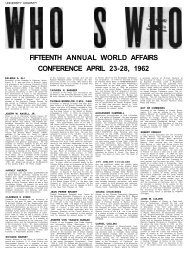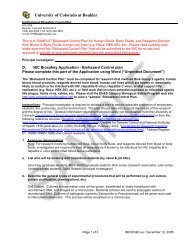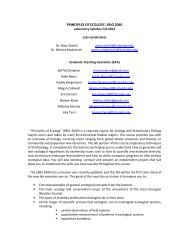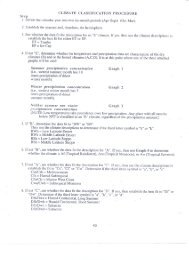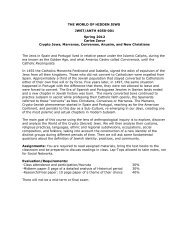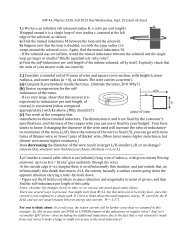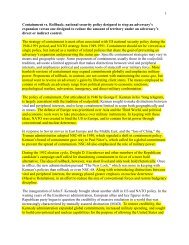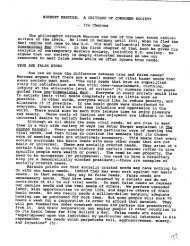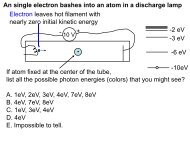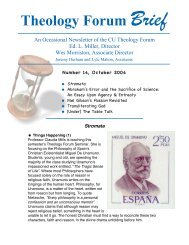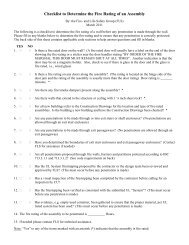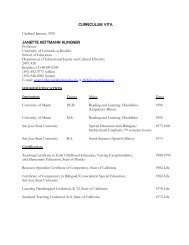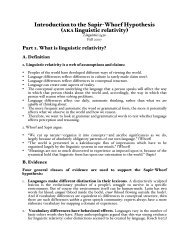Some Applications of Newton's Laws. Solving Fnet = m a problems ...
Some Applications of Newton's Laws. Solving Fnet = m a problems ...
Some Applications of Newton's Laws. Solving Fnet = m a problems ...
You also want an ePaper? Increase the reach of your titles
YUMPU automatically turns print PDFs into web optimized ePapers that Google loves.
Forces and circular motion<br />
NA-4<br />
� �<br />
NII: <strong>Fnet</strong> m a To make something accelerate, we need a force in the same direction as<br />
the acceleration. Centripetal acceleration is always caused by centripetal force, a force<br />
toward center. “Centripetal” means “toward the center”. “Centrifugal” means something totally<br />
different. Centrifugal forces don’t exist! More on that below.<br />
Example: Rock twirled on a string. (Assume no gravity)<br />
2<br />
v 2 r<br />
FT m a m , v ,<br />
r T<br />
r<br />
F.B.D:<br />
( 2<br />
2<br />
r / T) 2 r 2 1<br />
T 2 2<br />
FT<br />
Given: m = 0.1 kg , T (period) = 1 s , radius r = 1 m<br />
What is tension FT in the string ? (Here, we use<br />
symbol FT , since T already taken by period.)<br />
FT is the only force acting. (No such thing as<br />
"centrifugal force"!)<br />
F m 4 m 4 ( 0. 1) 3. 9 N 1 pound<br />
r T 1<br />
What about the outward "centrifugal force"?<br />
A person on a merry-go-round (or twirled on a rope by a giant) "feels" an outward force. This is<br />
an illusion! There is no outward force on the person. Our intuition is failing us. Our intuition<br />
about forces was developed over a lifetime <strong>of</strong> experiences in inertial (non-accelerating) reference<br />
frames. If we are suddenly placed in an accelerating reference frame, our brains (wrongly)<br />
interpret our sense impressions as if we were still in a non-accelerating frame.<br />
The result is that the direction <strong>of</strong> the perceived force is exactly opposite the direction <strong>of</strong> the true<br />
force. Example: A person in car accelerating forward. The chair pushes the driver forward. The<br />
force on the driver is in the forward direction. But the driver "feels" herself pressed back into the<br />
seat. It seems there is some force pushing the driver backward. WRONG!<br />
a<br />
FT<br />
"Centrifugal force" (not to be confused with "centripetal force") is also called a "pseudo-force"<br />
or "fictitious force" . <strong>Newton's</strong> <strong>Laws</strong> are only valid in a non-accelerating reference frame (an<br />
inertial frame). If we try to analyze motion in a non-inertial frame (for instance, in a rotating<br />
2/9/2009 © University <strong>of</strong> Colorado at Boulder



